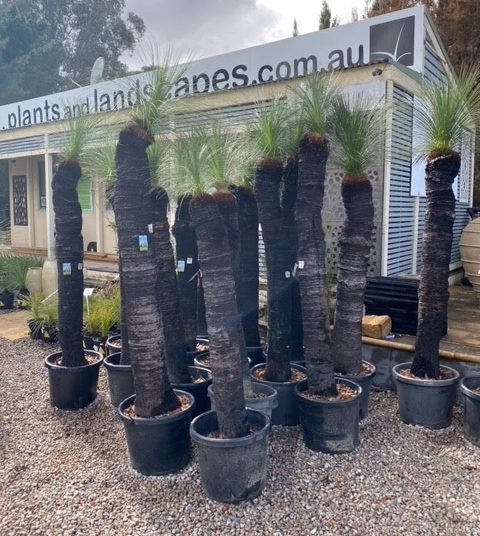Let's Look at Grass Trees I
Xanthorrhoea glauca and Xanthorrhoea johnsonii, both beautiful drought resistant native trees.
The Grass tree is best suited to climatic conditions in the ACT and NSW as it has a natural distribution area throughout the South East Coast that extends inland. They have a trunk that is typically black as a result of bush fires that adds to their visual impact.
The Amazing Grass Tree
Xanthorrhoea glauca's leaves are a grey or glaucous green and in spring can flower with tall spikes protruding from the top of the plant with a creamy white hue. This species prefers well-draining, aerated soil and requires a sunny position. These plants are slow growing but live a long time. In low nutritional soil, these plants only grow 1-2 centimetres a year. Depending on soil nutrition, they may have a higher growth rate.
Xanthorrhoea johnsonii is tall with a trunk that is typically black as a result of bush fires and a crown of thin, spikey green leaves. As this grass tree grows incredibly slowly, just 1 cm per year on average, so a tree with a one metre tall trunk could be 100 years old! In better soils, growth is faster and trees are more likely to grow multiple heads. When you purchase your Grass Tree, chances are you’re buying an heirloom item that has taken dozens of years to grow.
All Xanthorrhoea species have the spectacular ability to survive and thrive after fire damage as the old leaf bases can protect the new growth within. This makes it a perfect plant for fire-prone areas. Once established, the plant is very drought tolerant and hardy. Be mindful to maintain a regular watering schedule immediately after planting and care for them well in the initial stage. This plant has a notoriously sensitive root system so be careful when and if transplanting.
Only a small number of reputable companies successfully harvest and transplant Grass Trees. Be cautious of who you purchase from as it can take many months to see whether a tree has been correctly transplanted.




